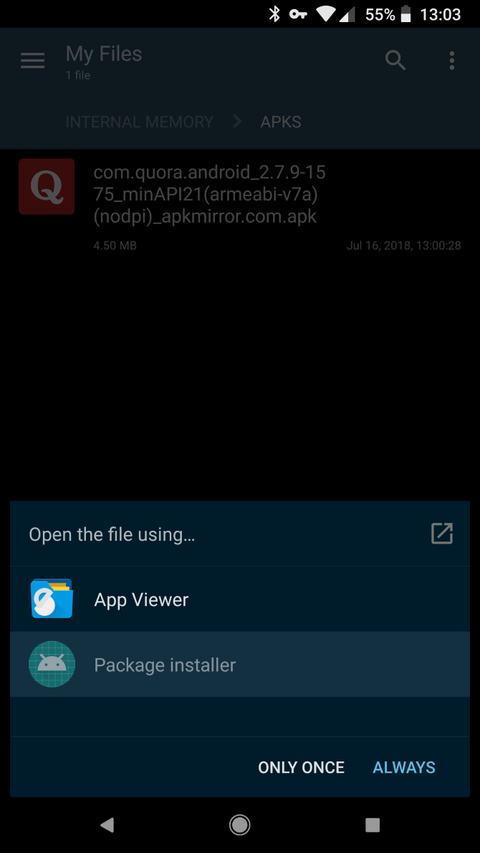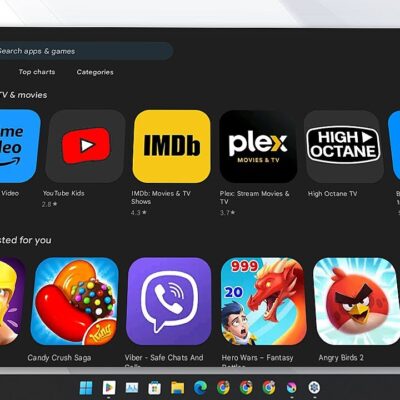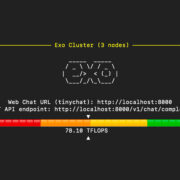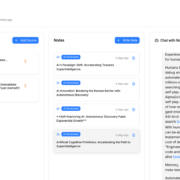How to manually install or sideload apps on Android
If you’ve only ever installed apps from the Google Play Store on your Android device, you’re missing out on a whole world of new opportunities. Unlike Apple’s iOS, Android allows you to install apps from anywhere—this is called sideloading.
Whether you’re an Android beginner or veteran, sideloading is a useful tool to understand. We’ll walk you through the process of finding third-party apps, how to sideload those apps on Android, and some safety concerns you should be aware of.
What is sideloading?
Sideloading is the process of putting a file (usually an app) on your Android device from a source other than the Google Play Store.
When people say “sideloading,” they’re generally referring to apps, but you can also sideload other media on Android. Sideloading apps involves downloading an APK file (Android’s installer package format) and installing it manually.
Android’s open nature means that you’re generally free to install apps from wherever you see fit. If you don’t like Google Play, you can install an alternative Android app store like F-Droid or the Amazon Appstore. But since Google doesn’t let you download those app stores from Google Play, you’ll need to find them elsewhere.
Why would I want to sideload apps?
One of the biggest reasons for sideloading is accessing apps that aren’t available on Google Play. Some apps aren’t hosted there due to breaking the Play Store’s terms of service.
For instance, Amazon’s Appstore and the Humble Bundle aren’t available because they download other apps. Others, like YouTube alternative client NewPipe, add new features to YouTube that Google isn’t fond of. But these apps are still safe, and offer benefits to you.
Or perhaps you want a Google-free phone. Part of that is avoiding Google Play, so you can sideload apps instead.
Whatever your reason, sideloading is a key feature of Android you should know how to do.
How to enable sideloading on Android
Before you actually sideload a file, you’ll need to enable the feature. For security, by default, Android prevents you from installing apps that come from outside Google Play. This adds a fence to keep novice users from inadvertently installing a malicious file, but you can override the setting.
The process for doing so depends slightly on your version of Android. If you don’t plan to sideload often, for safety, we recommend turning this setting off after installing a sideloaded app. You can turn it back on when you need it next.
Enable sideloading on Android 7 Nougat and older

In older versions of Android, sideloading is an all-or-nothing toggle. You simply need to flip a switch to enable the ability to install apps from anywhere.
To do so, head to Settings > Security. You’ll see an entry on this page labeled Unknown sources. Toggle this on, and your phone will display a warning that your device is more vulnerable to attack with this setting on. We’ll discuss this shortly; tap OK to accept it for now. On older Android versions, this is all you need to do for sideloading to work.
Enable sideloading on Android 8 Oreo and newer



On newer versions of Android, Google changed how sideloading works to increase security. Now, you must toggle the Unknown sources option on a per-app basis, instead of globally. This allows you to sideload from certain apps you often use, while keeping others blocked for security.
To toggle this on Android 8 through 11, open Settings > Apps & notifications. Expand the Advanced section at the bottom and tap Special app access. On the resulting menu, scroll down and choose Install unknown apps. On Android 12, you’ll find this setting under Apps > Special app access; there is no Advanced heading.
In this menu, you’ll see a list of apps on your device that have the capability to install other apps. Select the one you want to install apps through, such as your browser, cloud storage service, or file explorer. Then enable the Allow from this source slider.
Sideloading Apps has risks: Understanding the security concerns
Before we continue, it’s important to discuss a few security matters about sideloading.
By installing apps on your device that aren’t from Google Play, you’re potentially opening your phone up to problems. While Android malware isn’t a massive issue out of the box, the easiest way to introduce malicious processes to your device is by installing shady or dangerous apps.
Thanks to Google Play Protect, all apps on Google Play are (theoretically) safe. That’s not the case when you’re downloading from the wild west of the internet. To stay safe, you should only download from trusted APK sources.
For example, APKMirror is a well-known resource for downloading APKs. But we don’t recommend getting apps from random APK sites, as there’s no guarantee of safety.
You should also avoid installing “cracked” apps (paid apps that are illegally distributed for free). There’s a much greater chance of picking up an infection through them.
How to sideload apps on Android
The actual process of sideloading apps is pretty easy. We’ll cover the three most popular methods below.
Note that apps installed from outside Google Play won’t receive automatic updates in most cases. You’ll need to check a third-party app store for updates or download the latest versions manually.
Method 1: Install APKs directly on Android



You can sideload apps directly from your browser on Android. Simply open a page that offers APKs and download it. You’ll see a warning that the APK can harm your device; tap OK to proceed.
Once it downloads, you’ll see a little banner with a shortcut to open it. Tap Open and you can install the app. If you miss it, you can tap the Download notification or open your Downloads app to reach it.
Once installed, just open it like any other app and you’re good to go.
Method 2: Install APKs on Android through cloud storage


If you find your phone’s browser inconvenient for sideloading APKs, the next-best way is using cloud storage. This lets you download a large number of apps using your PC, then install them on your phone all in one go.
We recommend creating a dedicated folder for APKs in Dropbox, Google Drive, or whatever other storage service you use. Drop files in that folder whenever you come across them on your PC. Then on your phone, open the corresponding app and browse to that folder.
Tap an APK file, and you’ll see the same prompt to install it. Make sure you’ve given the cloud storage app permission to install apps if you’re on Android 8 Oreo or newer.
Method 3: Install APKs on Android via USB transfer



This is the least convenient method, but it still works if you don’t want to use the above two procedures for whatever reason.
Download the APKs you want to install onto your computer. Then plug your phone into your computer with a USB cable. You may need to tap the notification on your device and change the connection type to Transfer files if your computer doesn’t detect it.
On your computer, open This PC and transfer the APK files onto your device. It’s a good idea to create a new folder to keep them all in one place. Transfer them to your Android device, then you can disconnect the cable. (If you prefer, you can also connect your phone to your PC through Bluetooth and transfer the files that way.)
To install your apps, open an Android file explorer app and browse to the folder with the APKs. Tap on each to install them, which results in a screen just like installing from the other sources discussed above.
You’re now ready to sideload apps on Android
Now you know the essentials of downloading and installing APKs on your Android device. Enabling it and installing the apps is the easy part—it’s most important to make sure you stay safe while doing so. Remember to only install apps from trusted locations and keep an eye out for any suspicious behavior on your device.
Consider installing an Android security app if you often sideload and want an extra layer of protection.










